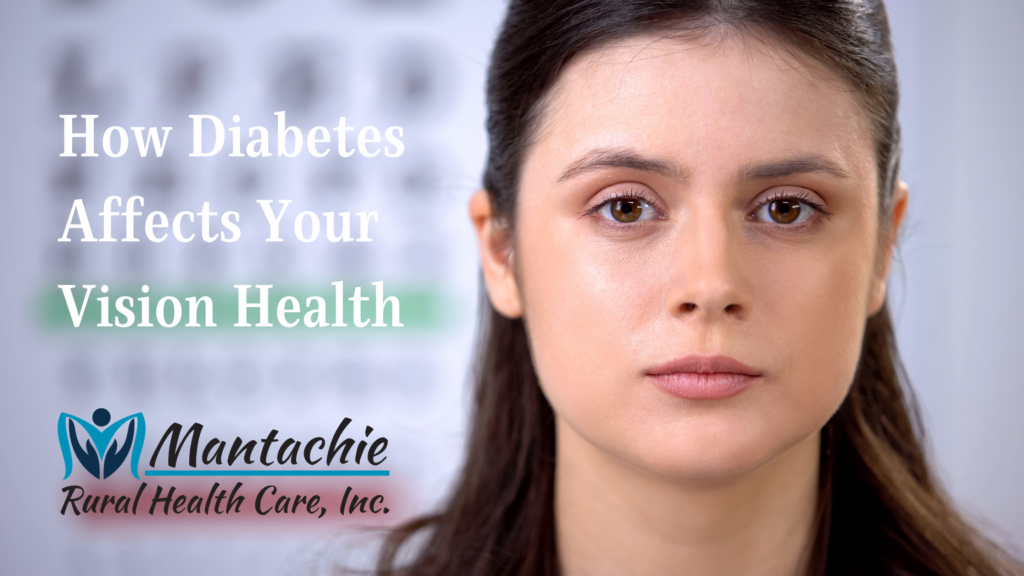
Diabetes is a disease of the endocrine system but it can affect just about every other organ and organ system in your body including your eyes. Diabetes can lead to several eye conditions and it is the primary cause of blindness in people with diabetes between the ages of 20 and 74. In today’s article, we’ll take a look at how diabetes affects your vision health and what you can do to lower your risk of developing one of these conditions.
Why Diabetes Affects Your Vision Health
Diabetes is a metabolic condition affecting the way your body produces insulin. It can lead to hyperglycemia, or high blood sugar, and hypoglycemia, or low blood sugar. Hyperglycemia can lead to a number of vision health problems while hypoglycemia can result in temporary blurry vision.
Four Eye Conditions Caused by Diabetes
Each of these conditions can affect people with and without diabetes. However, people with diabetes are at a higher risk for these vision problems.
- Blurry vision. Hypoglycemia is just one of the ways diabetes can lead to blurry vision. Some patients experience blurry vision when they begin insulin treatment. Long-term blurry vision may be caused by diabetic retinopathy, a group of vision conditions caused by diabetes.
- Cataracts. The natural internal lens in the eye works like a camera, allowing your eyes to take images of the world around you. If the lens becomes cloudy, a cataract has formed. In addition to cloudy, blurry vision, older people with diabetes may also experience near-sightedness due to cataracts.
- Glaucoma. Your eye needs fluid to function properly. When the eyes don’t get enough fluid, pressure builds up. This condition is known as glaucoma. Glaucoma can damage the nerves and blood vessels leading to changes in vision. The most common form of glaucoma, open-angle glaucoma, can be treated with medication. Open-angle glaucoma may not produce any symptoms until it is further along. Less common glaucoma forms may lead to headaches, blurred vision, eye pain, halos around lights, watery eyes, and even vision loss.
- Diabetic retinopathy. High blood sugar caused by diabetes can damage the blood vessels in the eye’s retina. This condition is known as diabetic retinopathy. If left untreated, it can lead to blindness. Other types of retinopathy include:
- Background retinopathy. This is a “milder” form of diabetic retinopathy in which the blood vessels are damaged but your vision is still okay.
- Maculopathy. The macula is the part of the retina that helps you see clearly for reading, driving, and other activities. Diabetes can damage this part of the retina resulting in maculopathy. Swelling from this condition can lead to serious eye problems if left untreated.
- Proliferative retinopathy. When the cells at the back of the eye don’t receive enough oxygen, new blood vessels may form. These blood vessels are very fragile and can easily develop blood clots which can cause scarring and pull the retina away from the back of the eye. A detached retina can lead to irreversible vision loss. Some cases of proliferative retinopathy can be treated if caught early.
How You Can Protect Your Vision Health
The best way to protect your eye health is to keep your blood sugar levels in check as often as possible. If you are having trouble with hyperglycemia, it’s time to re-visit your diabetes health provider to discuss changes in insulin treatment. You should also visit your eye doctor regularly for an eye exam and to discuss your diabetes and changes in your vision.
Another way to protect your vision and other areas of your health affected by diabetes is to educate yourself about your condition. Our website is a great source for diabetes education and we offer a diabetes education class each month at Mantachie Rural Healthcare. To learn more about our diabetes education program or how we can help you manage your diabetes, call 662-282-4226.


